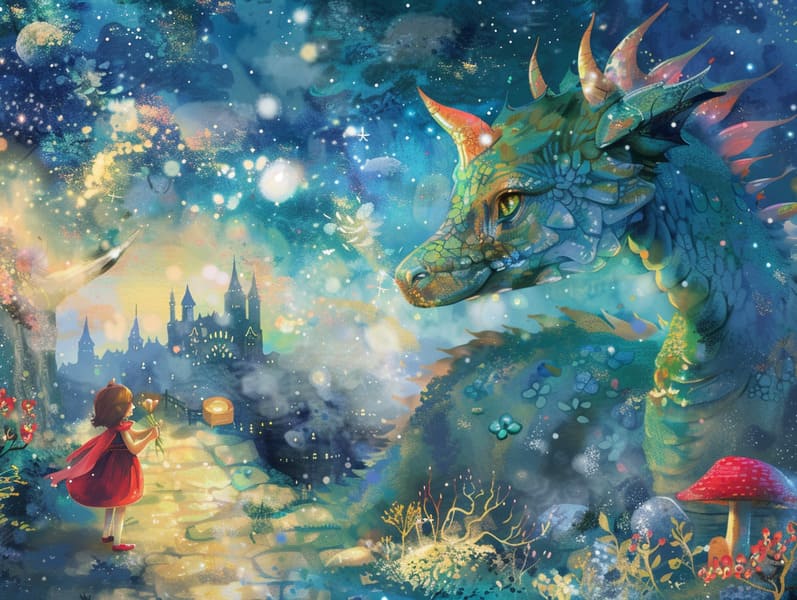
Traditional fairy tales have ancient roots. These tales have been recounted from one generation to the next far before they were ever documented. They sprang from a variety of civilizations, including Indigenous traditions. They were initially told among adults, often carrying themes and messages reflective of the societal norms and beliefs of the time.
Jacob and Wilhelm Grimm, Jacob and Wilhelm Grimm, were among the first to compile and publish many of these beloved fairy tales. Their collection, "Grimm's Fairy Stories," included stories like "Cinderella," "The Story of Hansel and Gretel," and "Schneewittchen," which have since become essentials in the world of timeless fairy tales. Similarly, H. C. Andersen's whimsical narratives, such as "The Story of the Little Mermaid," and "The Duckling that Could," have enchanted hearts worldwide, ensuring their place in the pantheon of beloved fairy tales.
Though they are old, these tales remain as significant as ever, especially as children's bedtime stories. These magical stories are now available in many formats, including beautifully illustrated books, enchanting animations, and online storybooks.
Their continued relevance can be attributed to several fascinating points:
Valuable Lessons: Timeless fairy tales often illustrate important moral lessons. Stories like "The Shepherd Boy and the Wolf" teach the benefit of integrity, while "The Race of the Tortoise and the Hare" exemplify the benefits of perseverance and unpretentiousness. These narratives offer young readers clear distinctions between virtue and vice, helping to shape their moral compass in a gentle yet important way.
Kindness and Comprehension: Traditional fairy tales frequently include characters facing struggles and tests, urging readers to understand with their struggles and encourage their triumphs. For instance, "Beauty and the Beast" emphasizes the merit of seeing beyond looks to understand the true essence of a character, encouraging awareness and knowledge.
Cultural Comprehension: Many classic fairy tales are rooted in the cultural contexts from which they originated. Exploring these fairy tales can provide intriguing perspectives into different backgrounds, encouraging a sense of global awareness and respect.
Imagination and Innovation: The extraordinary elements in classic fairy tales—enchanted lands—invigorate children’s fantasy worlds. These fairy tales transport readers to fantasy realms, boosting innovative ideas and a sense of fascination this site that continues a lifetime.
Timeless fairy tales are not only mesmerizing but also educational. They function as enchanted tools in fostering various mental and emotional abilities in young ones. When classic fairy tales are voiced, they improve language proficiency by bringing new linguistic elements and detailed sentence structures. This practice also enhances hearing abilities and attention span, as children hang on every word, anxious to see what happens next.
Furthermore, exploring the themes and characters of timeless fairy tales can foster analytical skills and intellectual skills. The young learn to detect patterns, forecast, and know cause and effect. These explorations also contribute to young ones utter their thoughts and feelings, promoting their emotional intelligence.
In today’s technological age, the availability of digital fairy tales has made these tales more acquirable than ever. Web-based platforms and digital apps offer vast collections of famous fairy tales that can be accessed or listened via anytime, anywhere. Fairy tales told out loud are particularly liked, offering an fascinating method for little ones to relish these magical stories. Audio stories and narrated videos take characters and settings to life, often joined by entrancing music and songs that improve the story adventure.
The lasting appeal of ancient fairy tales lies in their ability to adjust to changing times while maintaining their core values. Contemporary modernizations of these narratives often introduce more different figures and modern settings, making them pertinent to today’s audience. However, the core values of bravery, sympathy, and truth remain unchanged, continuing to strike a chord with young listeners of all ages.
Old fairy tales also offer a sense of ease and comprehensibility. They extend a coherent narrative with a distinct beginning, middle, and end, often wrapping up with the wrap-up of conflicts and the triumph of virtue over corruption. This reliability can be consoling for children, distributing a sense of steadfastness in an variable world.
Timeless fairy tales continue to allure and enlighten new generations, maintaining their attraction and value in modern society. As nighttime stories for kids, they bring a perfect blend of wonder and wisdom, advancing moral values, empathy, and creativity. The presence of internet fairy tales and the well-received status of fairy tales recited assure that these classic fairy tales remain within reach to new generations.
By safeguarding and imparting these fairy tales, we continue to pay tribute to the rich tapestry of storytelling and cultural heritage. Whether you are seeing a gorgeously illustrated book, delving into a cyber library, or listening via an audio story, the appeal of famous fairy tales is always within reach. These tales emphasize of the eternal power of storytelling and its ability to link us across generations and cultures.
Even if you are accessing a artistically illustrated book, perusing a cyber collection, or hearing an read-aloud story, the mystique of classic fairy tales is always within reach.
These tales highlight of the steadfast magic of stories and its ability to tie us across centuries and lands, forming a connection that charms and informs alike.
Comments on “The Evolution of Grimm's Fairy Tales and Their Endless Allure.”